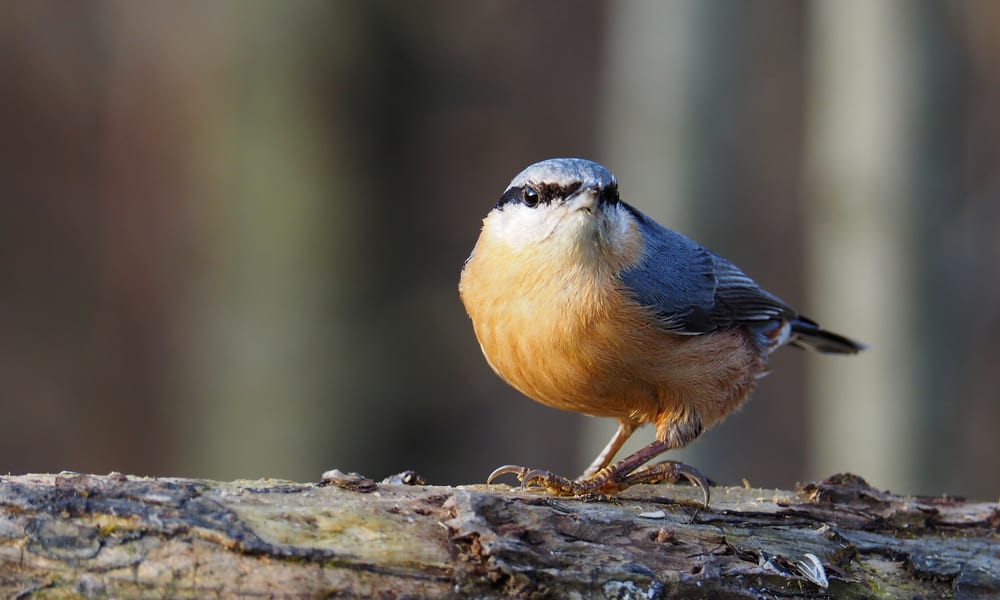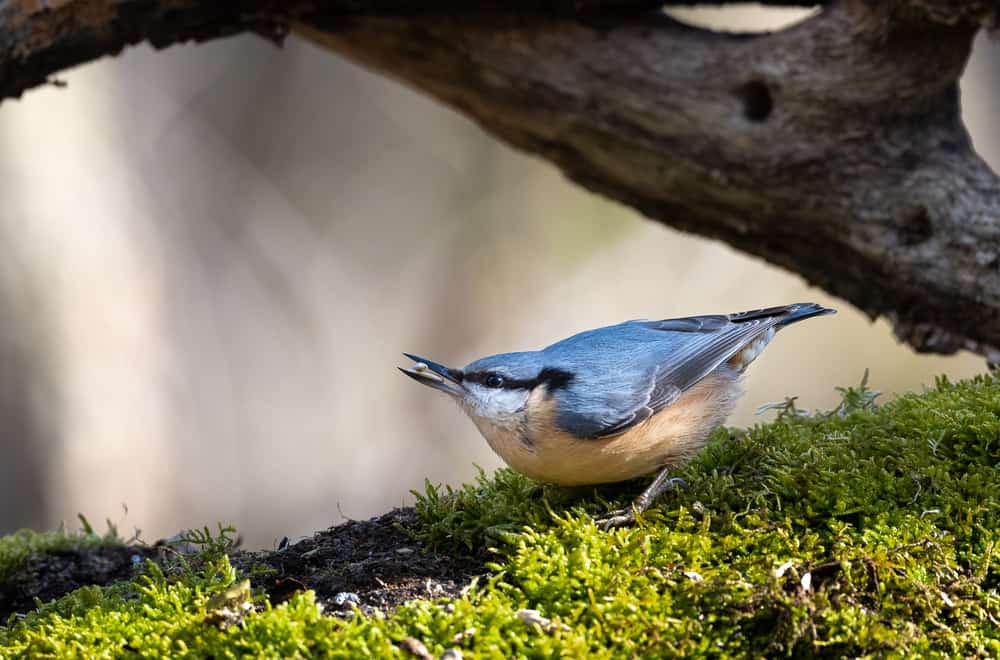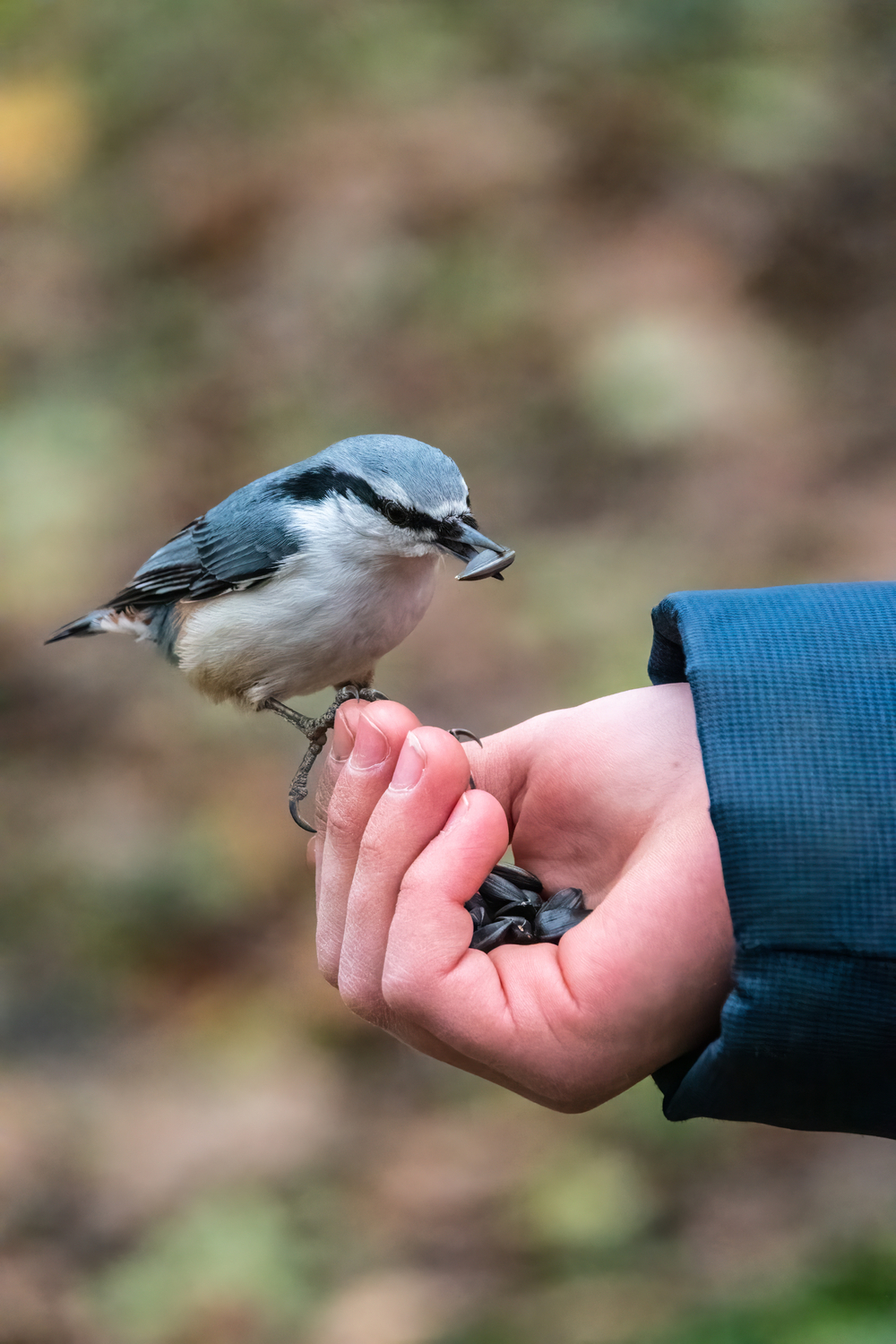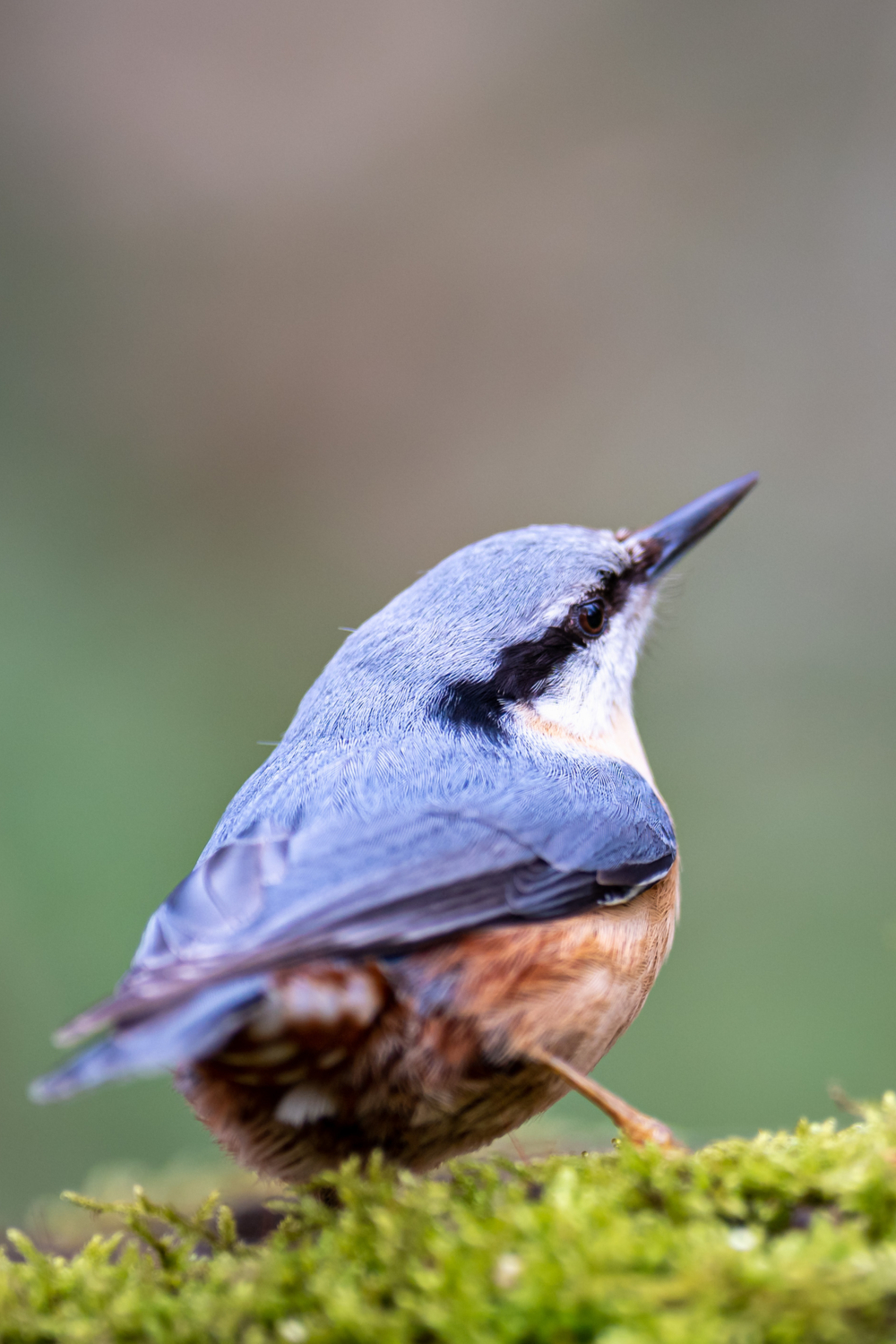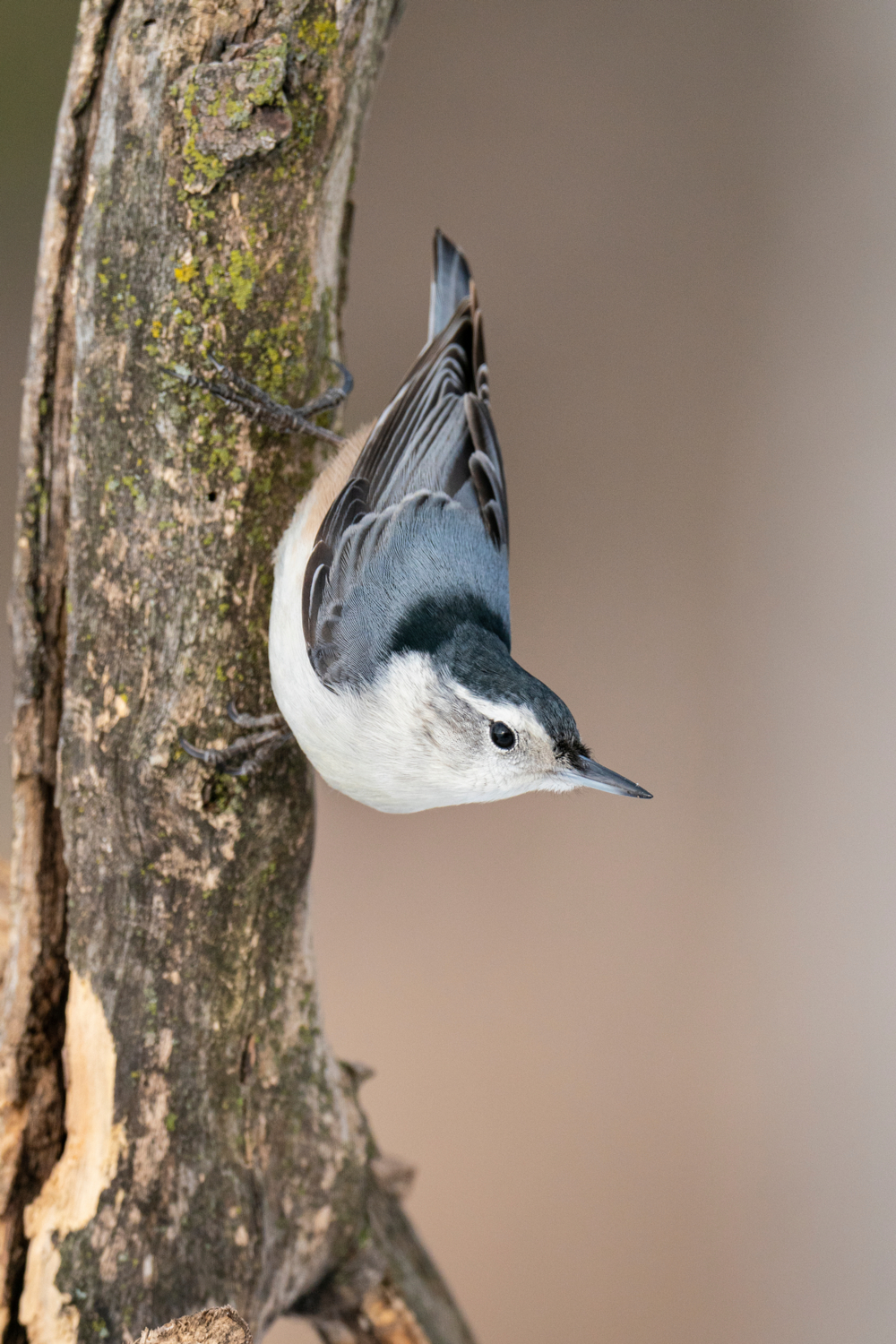Do you ever think of inviting the nuthatches songbirds to your garden by giving them food? But what kind of food do they eat while in the wild?
Like many other wild birds, they will change their diet to fit in different weather changes. Well, here we’ll talk about what nuthatches eat. So, we’ll start with what nuthatches eat in the wild.
What do Nuthatches Eat in the Wild?
These birds have a wise way of getting food and eating. Their diet is almost the same as that of many birds. But first, let’s dive into their eating habits.
Eating Habits
The types of food that these birds eat in the wild will depend on their species. But on normal weather states, nuthatches have the same way and habits of feeding as other birds.
As the name sounds, these birds like eating nuts. So, all species of nuthatches like to stuff and crack nuts. These nuts are the ones found inside the crevices of trees.
Also, it’s in these wood crevices where they like hiding their food. They keep the seeds, nuts, insects, or any food they have inside the holes. Then, these birds will cover them well using lichens and pieces of wood.
After some time, they’ll come and eat the food. The birds also use the food in their stores to nourish themselves in cold weather.
When looking for food, their long but strong beaks help them a lot. It allows the birds to remove seeds, nuts, or insects from tight places.
The Foods that Nuthatches Eat
These birds eat foods similar to what other birds eat in the wild. Expect them to feed on small insects, nuts, and seeds, among others.
Remember, each of these foods they eat will vary with the weather conditions. So, here are the foods that these birds eat and how it helps their bodies.
- Nuthatches love eating nuts. There are many types of nuts in the wild that these birds eat. They love peanuts, acorns, beechnuts, among others.
- These nuts carry many nutrients for their bodies. So, after eating them, the birds get fiber, fats, and proteins.
- Remember, these are nutrients to help the birds grow fast. Also, nuts help the birds repair the injuries on their bodies.
- They eat many seeds and grains. These are some of the foods they’ll store under the barks to help them during hard times. Seeds are an excellent meal for these birds.
- Seeds might not have many nutrients like insects and nuts, but they still help the birds be strong. It’s because the birds get more fats from eating seeds and grains.
- Nuthatches love eating many insects. It’s their staple food besides the nuts. Don’t forget that insects give them high levels of proteins.
- Also, insects give these birds more water in their bodies. So, it explains why most birds like nuthatches don’t drink too much water.
- The diet of these birds is dry because they eat many nuts and grains. With water in insects, it becomes a big boost to them.
- Insects also help the nuthatches birds grow fast. They are suitable for young ones. Remember, insects have many minerals like calcium, phosphorus, among others.
- Calcium from these insects helps form the bones of the birds. Also, for the breeding ones, it helps them make strong eggshells.
- These wild birds also eat worms. These foods carry very high levels of proteins and energy. Nuthatches get worms because they are an easy catch for them.
- Also, different types of worms help form a balanced diet for the birds. It gives the breeding worms vitamins. So, they’ll have a strong immune system.
- Besides nutrients, worms are essential for these birds during cold weather. During this time, it’s not easy for the birds to get most of their foods like insects. But worms will be present for them to eat.
- During the bad weather seasons, these birds feed on pinecones. They do it to get the seeds inside to help to get food. Remember, the birds get the seeds because of their long and slender beaks.
Facts about Nuthatches
You’ve now known what these birds eat in the wild. It’s also nice to learn more about their general habits and biology.
If you have this info, you’ll identify them well if they come to your garden. We’ll start with facts about the biology of these wild birds.
Biology
Expect nuthatches to have a simple body form. Also, they have many specs and adaptations. So, read on to see more facts about their biology.
- These birds have a small body size. An adult nuthatch has a length of 14 cm. their wings have a span that ranges from 22 to 27 cm.
- Also, expect a mature nuthatch to weigh 20 to 25 grams. They look like small woodpeckers.
- Nuthatches have a blue-grey color on the backs. And on their bellies, it’s a bit whitish. On the sides and tail, they have a chestnut color.
- On the head, these birds have a stripe. It shows that they are colorful birds.
- The females and males look a bit different. You’ll see this spec in the color of their tails. Sometimes it can be hard to know the difference between the one-year-old birds from the adults.
- Their beaks are long and slender. This spec helps them search and store foods in the bark of the woods. Also, these birds have short legs.
- You’ll get them in blue, slate grey, orange, or cream colors. Remember, these colors will vary with the species.
- There are close to 29 nuthatches species out there in the wild. Most of these species live in Asia.
- But only five species are in Central and North America. Others are in Europe, Middle East, Africa, and Russia.
- Of all these sets, the Bahama nuthatch family is the one that’s much in danger. Today, there are less birds of set left. They only live in the Bahamas.
- Other species of these birds in danger are the Algerian, Corsican, beautiful, and others. Even if they are wild, they are still important.
- The largest set is called the giant nuthatch. These birds here are 8 inches long. They are also an endangered set.
- Their way of breeding is different from most birds. They don’t build their nests.
- But they take over an old and used nest. Also, these birds can use a hole in a tree or hole to lay eggs. If the gap is too big, the birds will reduce the size using mud.
- Depending on the weather, they can start to breed in late April. The female ones will lay soft and smooth eggs that have a red-brown shell.
- Expect the incubation period to start from14 to 18 days. The fledge times for their young ones are from 23 to 25 days.
Habit
These birds have a unique behavior from other wild birds. Below are the facts about their habit.
- Like most birds, nuthatches also sing. But their songs are loud and can pierce through your ears. Still, they can bring beautiful music to the back of your garden in the morning.
- Expect these birds to sing through whistles and calls. It’s a way they talk to each other too.
- These birds also have families. They live in small pairs in their nests.
- The mating males and females live together until when the one partner dies. Also, the males help female partners to care for their young ones.
- As the young ones grow, the males help defend the nests. They’ll also protect the breeding ones from any harm.
- After breeding, the families of these birds form large flocks. It’s when they fly together. Here, many species can mix.
- Keeping them in birdhouses isn’t easy. They like the presence of dead tree barks.
- That’s the place where they make their nests or homes. Also, they won’t build a nest in modern areas and birdhouses because they can’t adapt to urban dwellings. So, cutting down trees destroys the homes of these birds.
- These wild birds are loyal to the nesting places. Even if they go to other sites, they will still come back to the woodlands.
- Also, they love woodlands more than any other place. It’s because this place is where they can get more insects to eat.
- Nuthatches ignore the relationship with human beings. Well, it’s because many people also don’t pay much attention to them.
- Also, nuthatches can’t make friendly pets. These are birds that love and are used to the wild.
- They’ll only come to your garden if there are many wood barks or when the weather is cold. It’s when they’ll come to look for food like worms.
Conclusion
Nuthatches are birds that love the wild. You can’t have them as your pets at home.
They love to make their nests in the bark of woods and trees. It’s where they get and store most of their foods. Also, here they get more insects and worms to eat.
Only a few birds have close to the same habits as nuthatches. But a similar thing with other birds is that they have families too.
So, do you have more thoughts on what nuthatches can eat? Have you seen them around your garden? Feel free to share your thoughts.
